MARKETING
Creating a Journey to Customer Satisfaction

Today, consumers have an increasing number of options for how to interact with your brand. These include virtual channels like social media and influencer marketing.
While it’s great that technology has provided us with plenty of new methods and marketing tactics, it also means you need to up your game. As a result, customers are placing a higher value on the overall shopping experience than ever before.
The way your brand presents itself at various touch points is a major factor in conversions. Customer journey optimization works to raise overall customer satisfaction (CSAT) and promotes growth in your business.
What is customer journey optimization?
Optimizing the customer journey involves mapping out and analyzing every touchpoint in the buying process. You can then improve the buyer’s journey by eliminating friction at each of these.
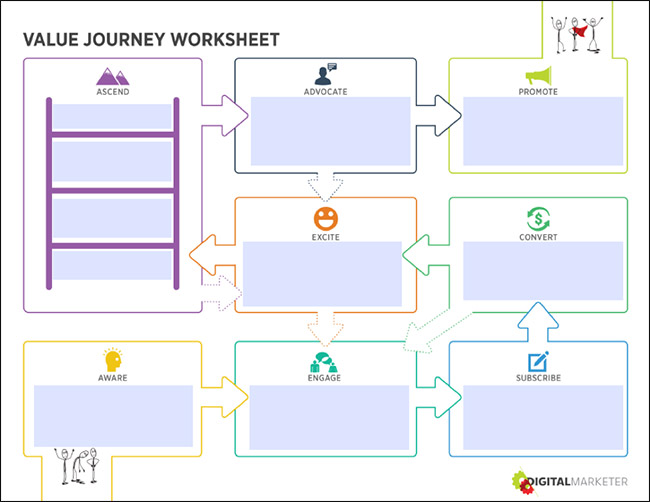
This encompasses all available touchpoints, including digital advertising, content and social media marketing. Customer journey optimization improves processes behind the camera, so to speak, so your brand, team, and products can be the stars of the show.
Benefits of customer journey optimization
When you optimize the customer journey, you stand to gain several benefits.
Save money
Mapping out the customer journey paints a clear picture of your current marketing and sales strategies. You can easily identify redundancies and remove these by analyzing them from an outside viewpoint. Long story short is that you’ll save money on operational costs and labor.
For example, simple customer actions like order tracking might be better and more efficiently managed by a virtual receptionist, freeing your team up to work on tasks that are more obviously profitable, such as sales.
Increase productivity
Customer journey optimization helps you cut out the fat. A well-trimmed buying process is much more efficient when it comes to how your team members’ time is used. By focusing their efforts on the most valuable touchpoints and prospect interactions, they’ll be able to generate more leads and conversions in less time.
Part of this optimization might mean investing in software that gives the customer more control over their journey. For example, if you offer co-working spaces, you may wish to invest in coworking space management software that empowers users to book and pay for rooms without having to speak to a team member in person or over the phone.
Better teamwork and collaboration

The results of the 2021 Statista survey shown above found that inter-departmental siloing is the biggest challenge when optimizing the customer journey. This is where customer journey mapping rises to the challenge.
With a big-picture view, those working at the top of the funnel will better understand where their prospects are heading, meaning they’re more able to prepare them for their next interaction. Likewise, salespeople working in the middle of the funnel can give feedback on the quality of leads and help prospecting teams adjust their strategies accordingly.
How does optimization increase customer satisfaction?
Many business benefits arise from customer journey optimization.
Reduces Friction
Customers may encounter friction at every step of their journey. We’re not talking about Newtonian physics that explain how your car grips a road; we’re talking about obstacles to conversion that are built into your buying processes.
Customer friction is something you must overcome for the consumer to take the next step. Common causes include:
- Lack of empowerment. Do customers have their preferred channels available to them e.g. live chat and self-service options?
- Unreasonable/uncertain duration. Are wait times reasonable, and are they communicated to the customer?
- Lack of identity. Is the customer known and recognized at each touchpoint, or do they have to repeat themselves along the way?
- Lack of transparency. Do customers know what step they’re at in the process?
- Lack of consistency. Does each interaction fit with your brand and provide a positive overall experience?
Let’s take friction caused by duration as an example. You could utilize a service that enables call forwarding or queue callbacks to help lower customer wait times. This would optimize the buyer journey and make it less arduous for the customer.

An often overlooked tactic is to focus on the obstacle causing the friction rather than the nudge itself. For example, you can make conversions easier so your prospects can sprint their way down the sales funnel.
In the early part of the journey, this might include optimization by way of marketing and communication channels. If your target audience is Gen Z and Millenials, for example, forgo traditional channels and build brand awareness on the social media platforms they use instead.
There are many eCommerce marketing strategies that can help you optimize interactions and reduce friction.
Focuses on pain points
An optimized customer journey gives consumers a more streamlined experience. Rather than being distracted by unnecessary steps, it ensures just the right amount of interactions and information.
This type of focused effort from your sales and marketing team means you can spend more time singing the benefits of your products or services. More importantly, it ensures each experience focuses on the specific pain points of your buyer personas.
Personalizes the customer experience
Part of the optimization process is building customary journey maps that achieve a high level of success. Each one should focus on a different buyer persona. These custom journeys are just one way that optimization personalizes the customer experience (CX).
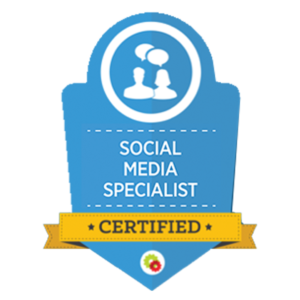
Are You Ready to Master Social Media?
Become a Certified Social Media Specialist and learn the newest strategies (by social platform) to draw organic traffic to your social media sites.
Building interactions for each segment’s preferred channels increases customer satisfaction. You can also use CRM solutions, customer journey management platforms, and marketing automation to hyper-personalize every interaction. This might range from having live agents and chatbots with access to customer account information to suggesting products your buyers will be interested in.
How to optimize the customer journey map
1. Define your business goals
Optimizing the customer journey can help you achieve various objectives, but it’s best to set your sights on a few specific goals for your business. This will help to guide you.
The following are some examples of business goals:
- To stamp out weaknesses or redundancies in the customer journey
- To gain more insight through increased customer feedback
- To increase conversions at bottlenecks in the sales funnel
2. Define your buyer personas
Buyer personas help you segment your audience according to their attitudes, values, behaviors, and demographic information. The first step is to identify your best buyers and your least valuable customer types.

When building your customer avatars, you should find common factors or indicators to help with optimizing customer journeys and areas like lead qualification.
3. Pick your target personas
To get started, pick the buyer persona that most closely fits your business goals. If this is your first time refreshing the customer journey, you’ll likely want to focus on the personas that represent the best lifetime value.
4. Start drafting a customer journey map
Now you have a better understanding of who your customers are, it’s time to start visualizing the purchasing journey. You need to map out every customer touchpoint or interaction from beginning to end.
This includes every channel that’s used to create brand awareness, from Instagram and Facebook marketing to email newsletters and word-of-mouth referrals. It also includes third-party channels like affiliate marketing and other partner programs.
From here, you can start optimizing and connecting actions to build a customer journey that’s robust and efficient.
5. Start optimizing
With a rough draft of the customer journey in place, you can begin to make alterations and improvements. Eliminate redundant or friction-building interactions, and map out pathways that allow for a seamless transition from one touchpoint to another. Ensure these make sense for the buyer persona involved.
For instance, when nudging Gen Zers from the brand awareness to the subscription stage, you could focus on social media only. This means eliminating CTAs that involve newsletter subscriptions or inbound calling campaigns for this particular journey.
6. Use the right tools
By now, you should have a close to ideal journey for each buyer persona. These are optimized when friction is reduced and your team is set up for success. The only problem is that nothing is ideal.
No matter how much you prepare, there will always be room for improvement, so you’ll need to arm yourself with the best tools for the job. Customer relationship management software is crucial. Other marketing tools can also help you automate and track each customer’s journey.
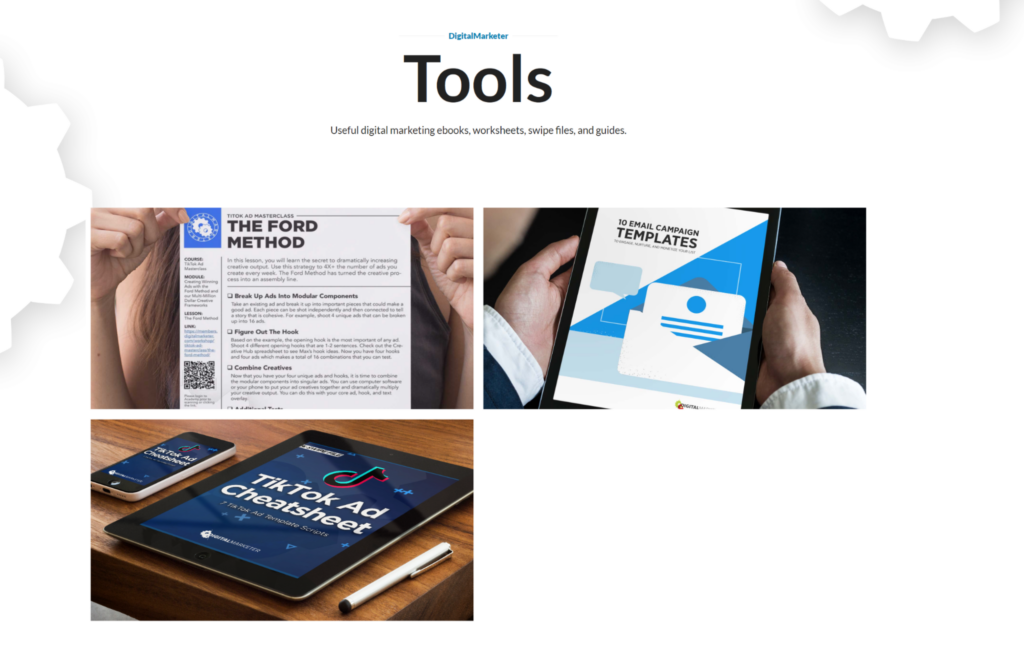
While you’re at it, don’t forget about the wealth of digital marketing resources available online.
7. Optimize, rinse, and repeat
Completing your optimized customer journey map is only the beginning. You’ll need to take this process and repeat it for each business goal and buyer persona. Of course, you can use existing maps as templates for building new customer journeys.
Using marketing tools, you should be able to track the success of your freshly optimized touchpoints and overall conversion rates. Use analytics tools and trusty A/B testing to hone in on what’s working and what isn’t.
Continue the process ad infinitum and reap the rewards of providing a seamless, frictionless customer experience.
Optimize the customer journey today!
Businesses like yours desire their operations to run as smoothly as possible. Your customers will hold you to these same standards during the buying cycle. Now, at least, you should have the tools and team to identify what your customers want.
This is the time to map out and optimize your customer journeys. That is, unless you’d rather wait around while they flock to competitors that offer a painless purchase process. Why not start improving your customer satisfaction levels today?
MARKETING
Quiet Quitting vs. Setting Healthy Boundaries: Where’s The Line?

MARKETING
Microsoft unveils a new small language model

Phi-3-Mini is the first in a family of small language models Microsoft plans to release over the coming weeks. Phi-3-Small and Phi-3-Medium are in the works. In contrast to large language models like OpenAI’s ChatGPT and Google’s Gemini, small language models are trained on much smaller datasets and are said to be much more affordable for users.
We are excited to introduce Phi-3, a family of open AI models developed by Microsoft. Phi-3 models are the most capable and cost-effective small language models (SLMs) available, outperforming models of the same size and next size up across a variety of language, reasoning, coding and math benchmarks.
What are they for? For one thing, the reduced size of this language model may make it suitable to run locally, for example as an app on a smartphone. Something the size of ChatGPT lives in the cloud and requires an internet connection for access.
While ChatGPT is said to have over a trillion parameters, Phi-3-Mini has only 3.8 billion. Sanjeev Bora, who works with genAI in the healthcare space, writes: “The number of parameters in a model usually dictates its size and complexity. Larger models with more parameters are generally more capable but come at the cost of increased computational requirements. The choice of size often depends on the specific problem being addressed.”
Phi-3-Mini was trained on a relatively small dataset of 3.3 trillion tokens — instances of human language expressed numerically. But that’s still a lot of tokens.
Why we care. While it is generally reported, and confirmed by Microsoft, that these SLMs will be much more affordable than the big LLMs, it’s hard to find exact details on the pricing. Nevertheless, taking the promise at face-value, one can imagine a democratization of genAI, making it available to very small businesses and sole proprietors.
We need to see what these models can do in practice, but it’s plausible that use cases like writing a marketing newsletter, coming up with email subject lines or drafting social media posts just don’t require the gigantic power of a LLM.
Dig deeper: How a non-profit farmers market is leveraging AI
MARKETING
Navigating the Video Marketing Maze: Short-Form vs. Long-Form


Are you torn between using long-form or short-form videos for your small business marketing campaign? Well, you are not alone. Despite 89% of consumers wanting to see more brand videos, there is no one-size-fits-all answer about the ideal video length.
However, this should not deter you from creating an effective video strategy. In 2023, people watched an average of 17 videos per day, highlighting the influence of video content in today’s digital landscape.
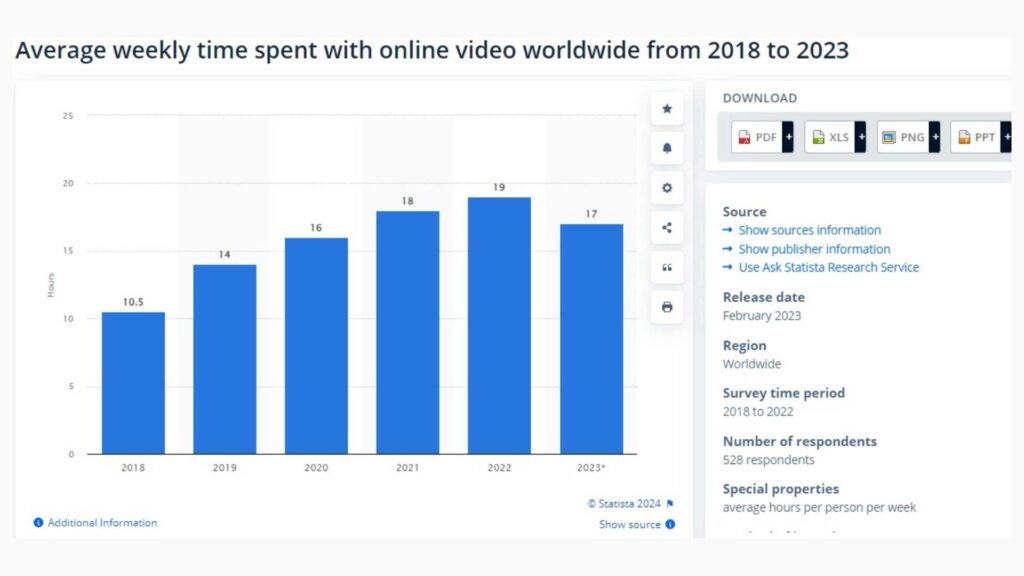

Both short-form and long-form videos offer unique advantages and come with their set of challenges. Join me as I uncover the benefits and limitations of each video format to help you make informed marketing decisions.
What are Short-Form Videos?
Short videos typically range from 30 seconds to less than 10 minutes long. They are popular on social media platforms like TikTok, Instagram, Snapchat, and YouTube.
Short-form videos deliver brief yet engaging messages that quickly capture the viewer’s attention. Here are some popular types of short-form video content.
- TikTok Challenges
- Instagram Reels
- Snapchat Stories
- YouTube Shorts
- Twitter Video Ads
Benefits of Short-Form Videos
A previously cited report shows that 39% of marketers find short-form videos, ranging from 30-60 seconds long, more successful. The same study reports that 44% of customers prefer watching a short video to learn about a brand’s offerings.
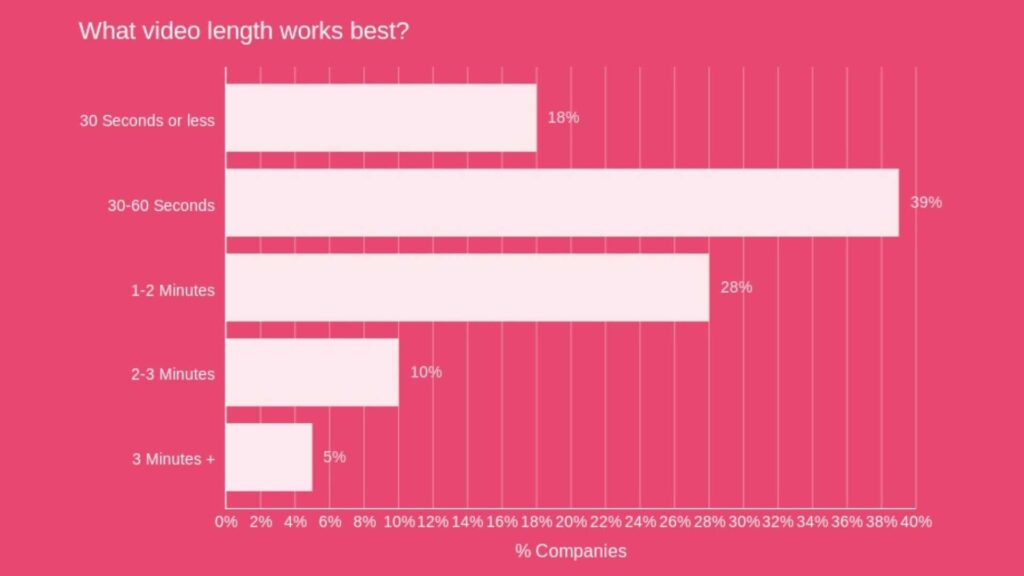

So, it is evident that short-form videos have their benefits. Let’s take a closer look at some of them.
Attention-Grabbing
Short-form videos capture attention quickly, making them ideal for the fast-scrolling nature of social media platforms. Your audience is more likely to watch them in their entirety compared to longer content.
Cost-Effective Production
Creating short-form videos requires less time and resources compared to longer videos. As a small business owner with a limited budget, using short-form videos can be cost-effective.
Increased Engagement
Short-form videos engage viewers due to their crisp and concise nature. This results in more likes, comments, and shares that boost your content’s visibility and increase brand awareness.
Integrating short-form videos into your influencer marketing campaigns can further amplify your reach to new and diverse audiences.
Highly Shareable
Short videos are highly shareable. This makes it more likely for your viewers to share them, increasing their virality.


Want to get certified in Content Marketing?
Leverage the tools and channels to predictably and profitably drive awareness, leads, sales, and referrals—EVERYTHING you need to know to become a true master of digital marketing. Click Here
There are multiple benefits of adding video to your website including increased engagement, improved SEO, and enhanced user experience.
Limitations of Short-Form Videos
While short-form videos offer many advantages in content marketing, they also present some challenges.
Limited Message Depth
Due to their brief duration, short-form videos may struggle to convey complex or detailed messages. Longer videos might be more suitable if you need to communicate intricate information.
Competition for Attention
Standing out on platforms flooded with short-form video content can be challenging. You must create content that stands out to avoid becoming lost in the sea of other videos.
Shorter Lifespan
Short videos may lose their relevance with time. They can quickly get buried in users’ feeds, leading to a shorter visibility and engagement period than longer, evergreen content.
This means you must consistently create short-form videos to maintain audience interest over time.
Limited SEO Impact
Short-form videos may be more challenging to optimize for search engines than longer, more keyword-rich content. This can affect the discoverability of your content outside the social media scene.
What are Long-Form Videos?
Long-form videos are typically longer, ranging from a few minutes to several hours. They extend beyond a few minutes to several hours, providing ample time for in-depth topic exploration and detailed content.
These videos are particularly suitable for educational content, product demonstrations, and narrative-driven storytelling. Long-form videos are common on platforms like YouTube and Vimeo. Common types of long-form video content include:
- YouTube Series
- Webinars
- Educational Tutorials and Courses:
- Behind-the-Scenes Content
- Interviews and Conversations
Advantages of Long-Form Videos
Long-form video content is the fastest-growing segment, with videos above 30 minutes experiencing tremendous growth over the years. Let’s explore some of the benefits behind this growth.
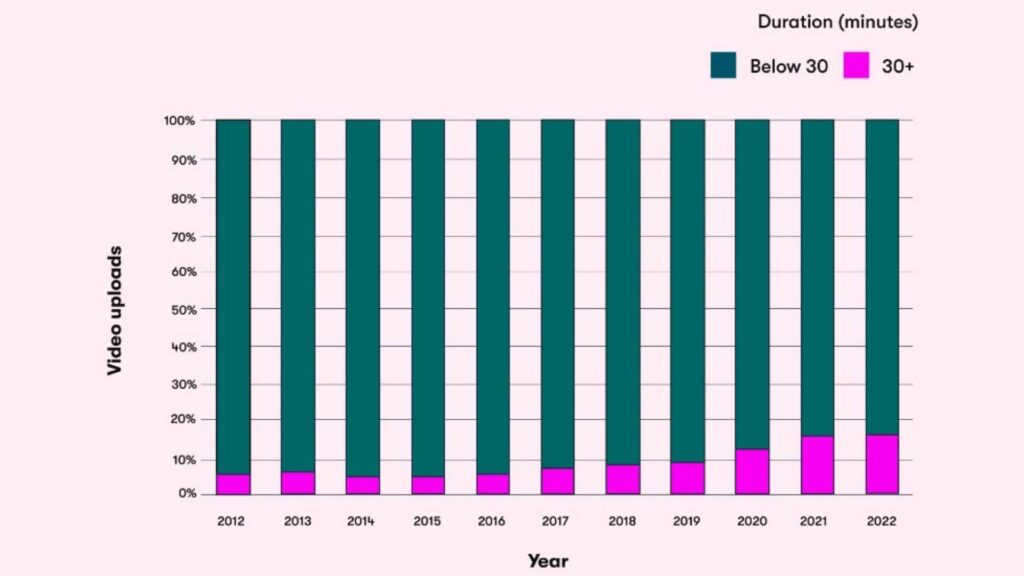

Establishes Expertise and Credibility
Long-form videos allow you to provide in-depth information about various subjects, establishing your brand as an authority. Potential customers will likely trust and rely on your insights when you consistently deliver valuable content.
Builds Strong Audience Connections
The more your audience watches your videos, the more they become familiar with your content and brand. This consistent engagement promotes trust and loyalty, helping you create deeper connections with your audience.
Provide SEO Optimization Opportunities
Long-form videos keep your audience engaged for a longer duration than short ones. This signals search engines that your content provides value, resulting in higher rankings and increased visibility.
Besides, these videos provide opportunities to optimize for relevant keywords. This Attrock guide offers more insights into the value of SEO for your small business.
They Are Sustainable
Unlike short videos, well-produced and valuable long-form videos have an extended shelf life. They can continue to attract views and engagement over an extended period, contributing to a sustainable content strategy.
Instagram reels are also a part of short videos and you can get benefits from this platform by integrating it with your website. You can learn how to embed Instagram Reels on websites and get extra benefits from your Reels.
Drawbacks of Long-Form Videos
Despite their benefits, long-form videos also have certain limitations, including:
Attention Span Challenges
Between distractions, juggling tasks, and information overload, user attention span quickly diminishes. Viewers may lose interest and disengage from your long video before its conclusion.


Are You Ready to Master Social Media?
Become a Certified Social Media Specialist and learn the newest strategies (by social platform) to draw organic traffic to your social media sites.
Complex Production Process
Creating high-quality long-form videos requires more resources, including time, equipment, and skilled personnel. This can be disadvantageous, especially for small businesses with limited budgets.
Platform Limitations
Some social media platforms and video hosting sites may limit video length, making it challenging to distribute long-form video content. You may then be forced to repurpose your content to suit various platforms.
Short-Form or Long-Form Videos: Which Are Better?
Now that you know the benefits and limitations of each format, which one should you choose? Short-form or long-form videos?
Well, it all boils down to considering several factors, such as:
Content Objectives
What do you want to achieve from your video marketing campaign? Short-form videos are highly effective for quick brand exposure and generating buzz. Long-form videos, on the other hand, contribute to a more in-depth understanding of the brand.
Target Audience Preferences
Audiences with short attention spans likely prefer short-form videos, while long-form videos appeal to those seeking a more immersive experience.
Similarly, short-form videos may appeal more to younger audiences, while older demographics may prefer the depth of long-form content.
Platform Dynamics
Various platforms support different content formats. Short-form videos are well-suited for platforms like TikTok, Instagram, and Snapchat. On the other hand, platforms like YouTube and Vimeo are better for hosting longer videos.
Industry Type
Short-form videos would be ideal if your industry thrives on trends, entertainment, and quick messages. However, long-form videos are effective for industries requiring in-depth explanations or educational content.
Bottom Line
Ultimately, choosing short-form or long-form videos depends on your business’s specific needs and goals. Since both formats have advantages and limitations, making a choice may prove difficult.
However, it doesn’t have to be an uphill task. The key lies in recognizing when to incorporate each video format into your marketing strategy. Understanding your audience and its needs allows you to combine both formats strategically, maximizing the benefits of each.
Continuously analyze performance metrics and adapt your video marketing strategy accordingly to ensure optimal engagement and conversion rates.
-

 MARKETING6 days ago
MARKETING6 days agoEffective Communication in Business as a Crisis Management Strategy
-

 SEARCHENGINES6 days ago
SEARCHENGINES6 days agoGoogle Won’t Change The 301 Signals For Ranking & SEO
-
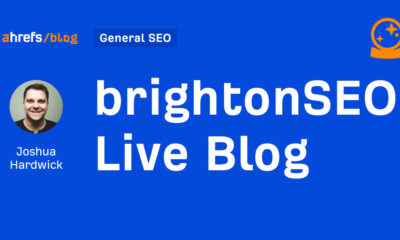
 SEO5 days ago
SEO5 days agobrightonSEO Live Blog
-

 PPC6 days ago
PPC6 days ago9 Ecommerce Trends to Boost Your Business in 2024
-

 SEO6 days ago
SEO6 days agoHow To Write ChatGPT Prompts To Get The Best Results
-

 SEO4 days ago
SEO4 days agoGoogle March 2024 Core Update Officially Completed A Week Ago
-
SEARCHENGINES5 days ago
Daily Search Forum Recap: April 25, 2024
-

 WORDPRESS4 days ago
WORDPRESS4 days ago9 Best WooCommerce Multi Vendor Plugins (Compared)

















